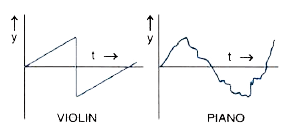Two offsprings developed in the same uterus from f ertilisation of two different ova are
Monozygotic twins
Dizygotic twins
Fraternal twins
Both (2) and (3)
To solve the question, "Two offsprings developed in the same uterus from fertilization of two different ova are," we need to analyze the types of twins based on their formation.
1. Understanding the Types of Twins:
- Twins can be classified into two main categories: monozygotic (identical) and dizygotic (fraternal).
2. Monozygotic Twins:
- Monozygotic twins are formed from a single zygote that splits into two embryos. This means they originate from one fertilized egg (one ovum) and are genetically identical.
- Since the question specifies "two different ova," monozygotic twins cannot be the answer.
3. Dizygotic Twins:
- Dizygotic twins, also known as fraternal twins, develop from two separate ova fertilized by two different sperm. This results in two distinct zygotes.
- Since the question states that the offspring developed from the fertilization of two different ova, this matches the definition of dizygotic twins.
4. Conclusion:
- The correct answer is that the two offspring developed in the same uterus from the fertilization of two different ova are known as dizygotic twins or fraternal twins.
- Therefore, the answer is both option b (dizygotic twins) and option c (fraternal twins).
Final Answer:
The correct answer is both 2 and 3 (dizygotic twins and fraternal twins).
---
- Twins can be classified into two main categories: monozygotic (identical) and dizygotic (fraternal).
2. Monozygotic Twins:
- Monozygotic twins are formed from a single zygote that splits into two embryos. This means they originate from one fertilized egg (one ovum) and are genetically identical.
- Since the question specifies "two different ova," monozygotic twins cannot be the answer.
- Dizygotic twins, also known as fraternal twins, develop from two separate ova fertilized by two different sperm. This results in two distinct zygotes.
- Since the question states that the offspring developed from the fertilization of two different ova, this matches the definition of dizygotic twins.
- The correct answer is that the two offspring developed in the same uterus from the fertilization of two different ova are known as dizygotic twins or fraternal twins.
- Therefore, the answer is both option b (dizygotic twins) and option c (fraternal twins).
The correct answer is both 2 and 3 (dizygotic twins and fraternal twins).
Topper's Solved these Questions
- HUMAN REPRODUCTION BOOK - CENGAGE BIOLOGY ENGLISHCHAPTER - HUMAN REPRODUCTION EXERCISE - Assertion -Reasoning Question
16 Videos
- HUMAN HEALTH AND DISEASEBOOK - CENGAGE BIOLOGY ENGLISHCHAPTER - HUMAN HEALTH AND DISEASEEXERCISE - ARCHIVES
46 Videos
- MICROBES IN HUMAN WELFAREBOOK - CENGAGE BIOLOGY ENGLISHCHAPTER - MICROBES IN HUMAN WELFAREEXERCISE - ARCHIVES
26 Videos
Similar Questions
Knowledge Check
The fitness of individual with different phenotypes of the same trait differs in two different situation P and Q.P and Q respectively indicate
 Adisruptive and directional selectionBdirectional and stabilising selectionCdirectional and disruptive selectionDstabilising and disruptive selection
Adisruptive and directional selectionBdirectional and stabilising selectionCdirectional and disruptive selectionDstabilising and disruptive selection
How will you distinguish between two sounds of same pitch and loudness emitted from two different Sources ?
View SolutionThe two pairs of wings of an insect develop respectively from
View SolutionTwo musical notes of the same pitch and same loudness are played on two different instruments. Their wave patterns are shown in Fig.

Explain why are the wave patterns different.
View SolutionPolyploid derived from two different species is called :
View SolutionThe water flowing through the same tube having two different cross section areas has different flow rates .
View SolutionThe expulsion of completely developed foetus from the uterus is known as
View SolutionWhich two of the following statements are incorrect regarding in vitro fertilisation ?
(i) In this method, ova from the wife/donor female and sperms from the husband/donor male are induced to form zygote in the uterus
(ii) If the embryo is having 2 blastomeres, it is transferred into the uterus
(iii) If the embryo is with more than 8 blastomeres, it is transferred into the uterus.
(iv) The baby thus produced is called test tube baby.
View Solution
